#hugues de france
Text
Constance d'Arles: resilient and determined
Hugh Capet, unsuccessful in his search for a Byzantine princess, arranged for his son Robert "the Pious" (so named for later acts of piety, rather than marital fidelity) to marry Rozala, the daughter of Berengar II of Italy and Countess of Flanders from her first marriage. She was considerably older than Robert, who divorced her within one year of his father's death. He had been living openly with Bertha of Burgundy (d.1035), Countess of Burgundy, and also a widow. However, Bertha was Robert's cousin: Pope Gregory V refused to sanction their marriage on the grounds of consanguinity, and excommunicated Robert. Robert repudiated Bertha around 1004; she remained unmarried and a force to be reckoned with.
In 1001, Robert married Constance of Arles (d.1034). She was a formidable, ambitious woman and their marriage, unsurprisingly, was difficult. Bertha's family opposed her, and Robert's advisors despised Constance because she favored southern customs and her Provençal family. When Hugh of Beauvais, close advisor to the king, suggested that Robert repudiate her in 1007, he was murdered by knights of Constance's kinsman, perhaps at her order. Her ambitions alienated the chroniclers of her day, who blamed her for several of the king's decisions and accused her of outrageous actions. In the account of a heresy trial of her former confessor, Constance struck out his eye with her staff. In 1010, Robert went to Rome, accompanied by his former wife Bertha, to seek permission to divorce Constance and remarry Bertha. His request was denied, he returned to Constance and together they had several children, with and against whom she plotted revolt against their father. At Constance's urging, their eldest son, Hugh Magnus, was crowned co-king with his father in 1017; after Hugh's death in 1025, Robert and Constance quarreled over which of their surviving sons should inherit. Despite his mother's protests, their second son, Henri, was crowned in 1027. Fulbert of Chartres wrote in a letter that he was frightened away from the consecration of Henri "by the savagery of his mother, who is quite trustworthy when she promises evil." Constance continued to encourage her sons to rebel, Robert agreed to their demands, and made peace until his death in 1031. Soon after that, Constance was at odds with both sons, Henri and Robert; she seized her dower lands and refused to surrender them to Henri's wife, Anna. Henri fled to Normandy, where he received aid, weapons and soldiers from his brother, returning to besiege their mother. However, Constance, ever wily and resilient, escaped, surrendering only when Henri swore to slaughter all the inhabitants of a town.
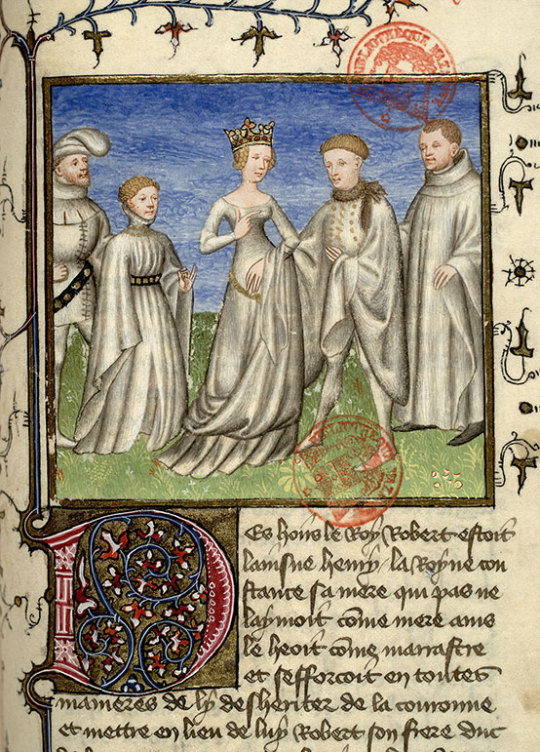
Despite this litany of malicious actions, contemporary critics of Constance also comment favorably on her concern for the royal treasury and her wise counsel to her husband. Her Provençal "foreignness" isolated her, and she struggled to balance her allegiance to both her natal and marital family. Seen in this light, many of her more notorious actions can be attributed to the absence of familial support and very real fears of repudiation. Penelope Adair argues convincingly that, given the limited resources at hand, Constance's efforts to preserve the royal treasury and her objections to alienation of royal property were "the well-founded concerns of a clear-sighted and determined royal consort."
Theresa Earenfight - Queenship in Medieval Europe
#x#xi#theresa earenfight#queenship in medieval europe#constance d'arles#bosonides#hugues capet#robert ii#rozala d'italie#berthe de bourgogne#hugues de beauvais#hugues de france#henri i#robert de bourgogne#fulbert de chartres#anne de kiev
5 notes
·
View notes
Text

Betty Blue (1986). A lackadaisical handyman and aspiring novelist tries to support his younger girlfriend as she slowly succumbs to madness.
While this film is just soaked in masculine fantasy, I still enjoyed the first half as a depiction of a manic romance, particularly Béatrice Dalle's magnetic performance as the titular Betty, but good lord, if it doesn't let itself down in the final act where it pivots from sexist to outright misogynistic. The end of Betty's arc left me pretty furious, and I feel would likely colour any repeat viewing of it. Just - - yeah. Not Good. 4/10.
#betty blue#1986#Oscars 59#Nom: Foreign Film#Jean-Jacques Beineix#philippe djian#jean-hugues anglade#beatrice dalle#gerard darmon#consuelo de haviland#france#french#writers#mental health#road trip#4/10
14 notes
·
View notes
Text
star boy

Hugues de Chaunac with Alain Prost, F3000, GP Pau (France) 1985
18 notes
·
View notes
Text
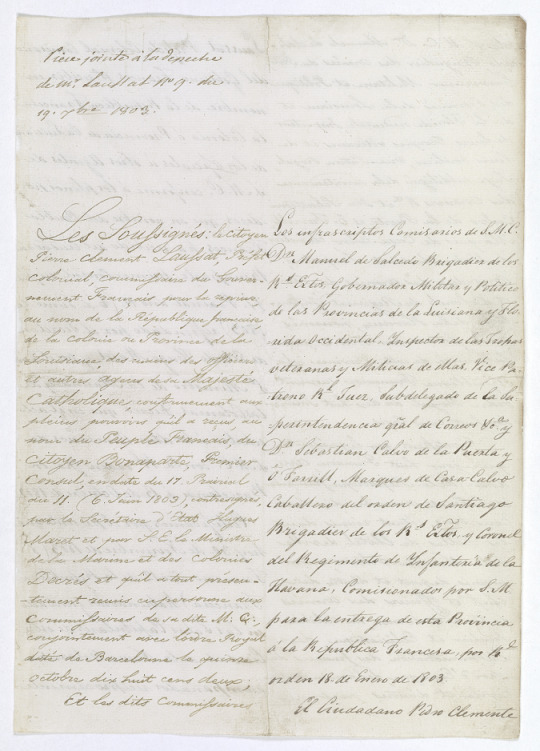
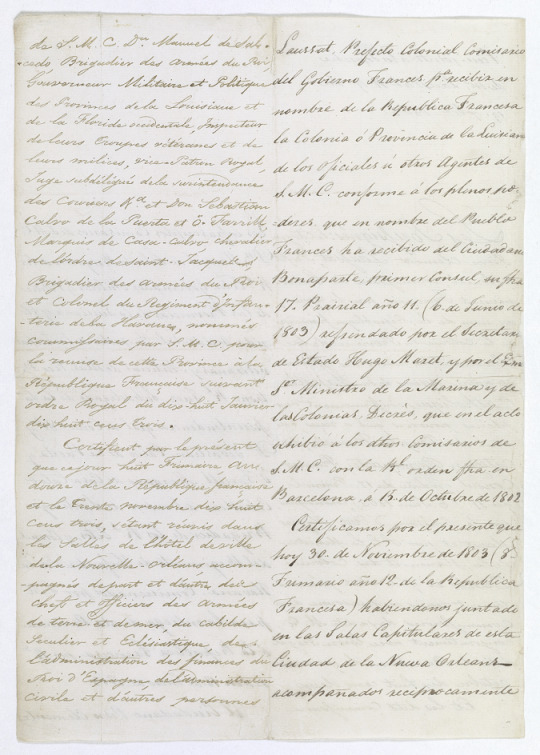

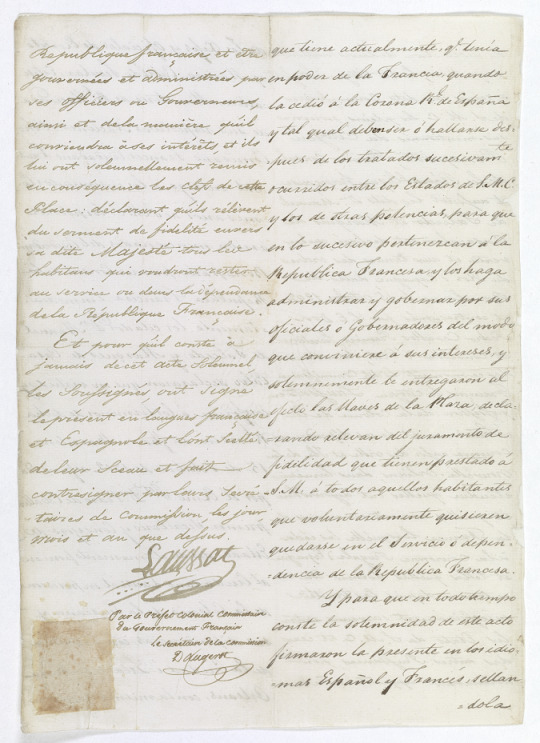
Original Protocol of the Delivery of Louisiana by Spain to France, at New Orleans on November 30, 1803
Record Group 11: General Records of the United States GovernmentSeries: Perfected TreatiesFile Unit: TS 86 AO: Treaty for the cession of Louisiana - English and French texts
[Handwritten] Pièces jointes à la depeche de Mr. Laussat n[']o 9. du 19. 7bre 1803. [Main body of document follows; French-language text on the left; Spanish-language text on the right (this pattern continues throughout the body of the document).] [French text follows -- first:] Les Soussignés : le citoyen Pierre Clement Laussat, Préfet colonial, commissaire du Gouvernement Français pour la reprise, au nom de la République Française, de la colonie ou Province dela Louisiane, des mains des officiers et autres agens desa Majesté Catholique, conformement aux pleins pouvoirs qu'il a reçus, au nom du Peuple Francais, du Citoyen Bonaparte, Premier Consul, en date du 17. Prairial an 11. (6. Juin 1803), contresignés, par le Secrétaire d'Etat Hugues Maret et pour S. E. le Ministre de la Marine et des Colonies Decrés et qu'il a tout présentement remis enpersonne aux Commissaires de sa dite M. C., conjointement avec l'ordre Royal daté de Barcelonne le quinze Octobre dix huit cens deux; Et les dits Commissaires [Spanish-language text follows (on right on original sheet/image):] Los infrascriptos Comisarios de S.M.C. D[']n. Manuel de Salcedo Brigadier de los R[']s Extos,.Gobernador Militar y Politico de las Provincias de la Luisiana y Florida Occidental, Ynspector de la Tropas veteranas y Milicias de ellas, Vice Patrono R[']l Juez, Subdelegado de la Superintendencia g[']ral [with tilde over the "r"] de Correos y c.[']a [?] y D[']n. Sebastian Calvo de la Puerta y O Farrill, Marques de Casa-Calvo Caballero del orden de Santiago Brigadier de los R[']s Ex[']tos, [with tilde over the "t"] y Coronel del Regimento de Ynfantería de la Havana, Comisionados por S.M. para la entrega de esta Provincia á la Republica Francesa, por R[']l. orden 18.. de Enero de 1803. El Ciudadano Pedro Clemente [full transcription at link]
35 notes
·
View notes
Photo

3 juillet 987 : Hugues Capet est couronné et sacré roi des Francs à Noyon ➽ http://bit.ly/Couronnement-Hugues-Capet La couronne, de nouveau soumise à l’élection, ne pouvait échapper à Hugues Capet, qui possédait sur la Loire et sur la Seine, deux places fortes capables d’arrêter les pirates Danois, et d’assurer ainsi la tranquillité du royaume
#CeJourLà#3Juillet#Couronnement#Sacre#Hugues#Capet#Roi#Francs#France#Cérémonie#Noyon#Élection#Politique#Événement#Jour#Date#Calendrier#histoire#france#history#passé#past#français#french#news#événement#newsfromthepast
11 notes
·
View notes
Text

Photographie de Jean-Marie Périer pour le journal Salut les Copains, 12 avril 1966.
Johnny Hallyday, Sylvie Vartan, Jean-Jacques Debout, Hugues Aufray, Catherine Ribeiro, Eddy Mitchell, Danyel Gerard, Claude Ciari, France Gall, Serge Gainsbourg, Frankie Jordan, Michèle Torr, Sheila, Chantal Goya, Dany Logan, Michel Paje, Ronnie Bird, Monty, Sophie, Noël Deschamps, Jacky Moulière, Annie Philippe, Claude François, Eileen, Guy Mardel, Billy Bridge, Michel Berger, Michel Laurent, Nicole (Surf ), Salvatore Adamo, Thierry Vincent, Tiny Yong, Antoine, Françoise Hardy, Benjamin, Dick Rivers, Monique (Surf ), Hervé Vilard, Jocelyne, Dave (Surf ), Rocky (Surf ), Coco (Surf ), Pat (Surf ), Pascal (Le Petit Prince), Richard Anthony et Christophe.
7 notes
·
View notes
Text
Petites Histoires du Monde
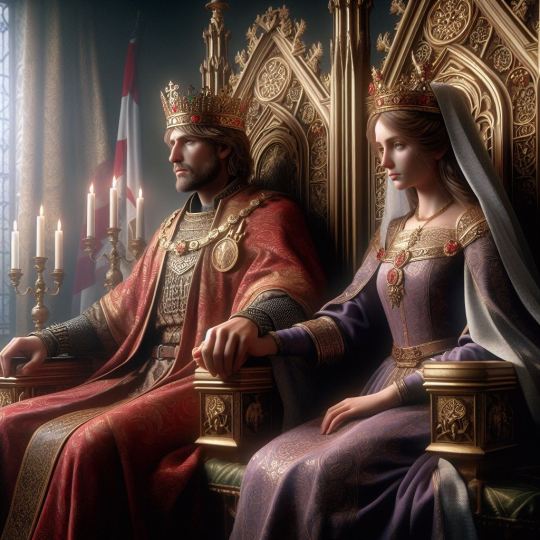
Listes des personnes et des OC pour l'instant :
- Baudouin IV de Jérusalem (5 histoires). (Plus à venir. )
Il est souvent associé à Alix de Tripoli, personnage fictif qui est la fille unique de Raymond III de Tripoli et qui a grandi à Jérusalem. Alix est douce, gentille, mais aussi intrépide et courageuse. Baudouin et Alix s'aiment infiniment, mais ils savent tous les deux que leur amour est impossible.
Mini-série : Guérison. Baudouin est guéri de la lèpre et décide quoi faire de sa vie. (À venir)
- Édouard Ier d'Angleterre (3 histoires) (Plus à venir. )
Il est souvent associé à sa femme Éléonore de Castille. Leur amour est inspirant et unique. Un OC peut apparaître également sous la forme d'Aliénor de Mercoeur, qui est la dame de compagnie et meilleure amie de la reine d'Angleterre.
Mini-série : Seconde Guerre des Barons avec le point de vue d'Henry III, Éléonore de Provence, Éléonore de Castille, Richard de Cornouailles et lord Édouard sur la bataille de Lewes de 1264. (Publié)
- Bohémond de Tarente (3 histoires) (Plus à venir. )
Bohémond est souvent associé à Alix de Sicile, une OC fictive qui est son épouse. Ils mettent du temps à se cerner l'un l'autre, mais après avoir découvert que sa femme n'est pas qu'une jolie chose à son bras, il est son plus fervent admirateur.
Mini-série : Chefs de la première croisade avec Godefroy de Bouillon, Baudouin de Boulogne, Hugues de Vermandois, Raymond de Saint-Gilles, Etienne de Blois, Robert de Flandres, Robert de Normandie, Adhémar de Monteil, Tancrède de Hauteville et bien sûr Bohémond. (En cours)
Personnages sans lien avec Bohémond de Tarente, Édouard Ier et Baudouin IV ou une mini-série.
- Louis IX de France, Saint-Louis (1 histoire)
- Édouard II d'Angleterre (À venir)
- Alphonse de Poitiers et sa femme Jeanne de Toulouse (À venir)
- Sybille de Jerusalem et Guy de Lusignan (À venir)
- Agnès de Courtenay (À venir)
- Amaury II de Jérusalem ( À venir)
- Aliénor d'Aquitaine ( À venir)
- Henry II d'Angleterre ( À venir)
- Richard cœur de Lion (À venir)
- Jean Sans Terre ( À venir)
Et bien d'autres....
Si vous voulez en voir plus n'hésitez pas à proposer des personnes ou des événements.
#fanfic#history medieval#medieval history#bohemond i of antioch#king baldwin#baldwin iv#edward ii#Edward I#booklr#france#england#eleonor of castile#eleanor of aquitaine#plantagenet#plantagenets
7 notes
·
View notes
Text
Contemporary descriptions of the dantonist execution compilation
Their trial was over around one o’clock in the afternoon. Only Luiner was acquitted. But as he was detained as suspect for the sake of general security he was escorted to the Luxembourg. The fifteen others were sentenced to death, and driven to the scaffold around six o’clock. They were in three tumbrils: in the first was Danton, next to Delacroix; Fabre near the executioner; Hérault opposite Chabot. In the second, Phelippeaux [sic], Westermann, Camille Desmoulins, Basire and Launai d’Angers [sic]. In the last tumbril, one saw but l’Abbé d’Espagnac; his companions were almost all strangers and little known to the public. Almost all approached death with the same audacity that they had shown in court. Danton, who, like Hébert, was recognizable by his red collar, seemed to pay little attention to the crowd around him: he was chatting with Lacroix and Fabre. Hérault was the quietest. Chabot pointed to the sky, laughing. Desmoulins spoke almost continually to the people; the courage he affected seemed like a painful effort, he was an actor who was studying to play his last part well. Diederichsen, danish lawyer, was executed first, the heads of Lacroix and Danton were the last ones to fall. Only that of Danton was shown to the people, among prolonged cries of ”vive la république.”
Suite du Journal de Perlet, number 561 (April 6 1794). A shortened version of this description is given in number 104 of Journal général de la guerre (April 13 1794). According to Michel Biard’s La Liberté ou la mort: mourir en deputé 1792-1795 (2015), these were the only contemporary journals that mentioned any details regarding the execution.
Camille had made incredible efforts to tear herself away from these execrable gendarmes, who have been the lowest servants of despots; so that in going to the scaffold he was completely naked to the waist, because his shirt was in tatters. I saw him cross the space of the palace at the Place de Sang (that's what I called Place de la Révolution) with a frightened air, talking to his neighbors with great agitation, and yet on his face was the convulsive laughter of a man who no longer has his head.
Dictionnaire neólogique des hommes et des choses, volume 2, page 480 (1799) by Louis Abel Beffroy de Reigny. In his Testament d’un électeur de Paris (1795) Beffroy adds that he couldn’t restrain his tears in watching Camille pass by.
I saw the tumbrils pass by to the place of execution, containing the men who, a few days before, had been seen as those who were to consolidate the revolution. Some maintained a firm and calm demeanor, others only showed on their faces that humiliating vexation felt by a scoundrel who finds himself caught in the trap set up by his enemy. This feeling was depicted with the most striking expression on the decomposed countenance of Danton. Camille Desmoulins seemed indignant at the deceit of Robespierre, who had never showed him more friendship than on the eve of his arrest. Bazire and Chabot tried to speak to the people by whom they were surrounded; though they spoke loudly, the noise which was made around them drowned out their voices. One only heard them say that, had not Marat been assassinated, he would have been accused of conspiracy like them, and that with them he would go to his execution. The multitude regarded as blasphemous an assertion of which the truth, a few days later, was disputed by no one. They were executed on 17 germinal.
Histoire Philosophique de la Révolution de France (1807) by Antoine Étienne Fantin-Desodoards, volume 5, page 371-372
Like Hugues Aubriot, who was imprisoned in the Bastille he had had built in order to trap others, when Danton had been condemned to death by the tribunal he had instituted, the crowd gathered in the square to feast their eyes on the horrible spectacle that the cries of the public promised them.
I was going to see Méhul, who was by then living on Rue de la Monnaie, when I came across the tumbril in Rue Honoré in which this revolutionary hero was for the last time presiding over his stricken party. He was calm, between Camille Desmoulins, whom he listened to, and Fabre d'Églantine, who did not listen to anyone. Camille spoke with great warmth, and struggled so much that his unfastened clothes left his collar and shoulders, which the blade was about to separate, bare. Never had life manifested itself in him by more activity. As for Fabre, immobile under the weight of his misfortune, overwhelmed by the feeling of the present and perhaps also by the memory of the past, he no longer existed. Camille who, by cooperating in the revolution, had thought he was cooperating in a good work, still enjoyed his illusion; he believed himself on the road to martyrdom. Alluding to his last writings, he shouted: “My crime is to have shed tears!” to the crowd. He was proud of his conviction. Fabre was on the other hand ashamed of his, he, who had been pushed into revolutionary excesses by less generous interests, was overwhelmed by the awareness of the truth. He saw only torture at the end of the little road that remained for him to travel.
Another physiognomy also attracted my attention in this cartload of reprobates, it was that of Hérault de Séchelles. The tranquility which reigned over the handsome face of this former advocate-general was of a different nature from the tranquility of Danton, whose face offered a caricature of that of Socrates. Hérault's calm was that of indifference; Danton's calm that of disdain. The pallor did not sit on the latter's forehead; but that of the other was colored with such a fiery tint that it looked less like he was going to the scaffold than returning from a banquet. Hérault de Séchelles finally seemed detached from life, the preservation of which he had purchased by so much cowardice, by so many atrocities. The appearance of this selfish man astonished everyone: everyone asked his name with interest, and as soon as he was named he no longer interested anyone. […] I went up to Méhul's, and, my imagination full of what I had just seen, I told him: “Tragedy well begun! I want to see the end of it, after having finished in three words the business which brought me. This Danton really plays his role well. We are all on the eve of the day that will end for him. I want to learn how to pass it well too.” "Useful study," said Méhul, who saw things with the same eye as me, and who would have accompanied me if he hadn't been in his dressing gown and slippers.
However, the fatal tumbril had not stopped moving; the execution was beginning when, after having crossed the Tuileries, I arrived at the gate which opens onto the Place Louis XV. From there I saw the condemned, not mounting together, but appearing one by one on the fatal scaffold, to die immediately by the effect of the movement which the board or the bed on which was about to begin for them the eternal rest. The rest of the operation was hidden from me by the operatives running it. The accelerated fall of the blade alone told me that it was was being carried out.
Danton appeared last on this scene, flooded with the blood of all his friends. Day was falling. At the foot of the horrible statue whose mass stood out in a colossal silhouette against the sky, I saw the rising, like a shadow of Dante, of this tribune who, half-lit by the dying sun, seemed as much to emerge from the tomb as ready to enter it. There is nothing as daring as the countenance of this athlete of the revolution; nothing as formidable as the attitude of this profile which defied the axe, like the expression of this head which, ready to fall, still seemed to dictate laws. Horrible pantomime! time cannot erase it from my memory. I found there all the expression of the sentiment which inspired Danton with his last words; terrible words which I could not hear, but which people repeated to each other, quivering with horror and admiration. ”Above all, don't forget,” he said to the executioner with the accent of a Gracque, don't forget to show my head to the people; it’s worth seeing.” At the foot of the scaffold he had said another word worthy of being recorded, because it characterizes both the circumstance which inspired it, and the man who uttered it. With his hands tied behind his back, Danton was waiting his turn at the foot of the stairs, when his friend Lacroix, whose turn had come, was brought there. As they rushed towards each other to give each other the farewell kiss, a policeman, envying them this painful consolation, threw himself between them and brutally separated them. "At least you won't prevent our heads from kissing each other in the basket," Danton told him with a hideous smile. Danton, as I have said, perishes as a result of a security more justified by reason than by politics. Warned of Robespierre's plans, Robespierre knows too well that he cannot send me to the scaffold without proving that he can be sent there himself." Resting on this idea, he fell asleep in laziness and pleasures.
Souvernirs d’un sexagénaire (1833) by Antoine Vincent Arnault, volume 2 page 95-100. According to Biard in Danton: Le mythe et l’histoire (2016) this is the only semi-authentic source we have for Danton’s last words being ”show my head to the people, it’s worth seeing.” It’s still however somewhat dubious considering Arnault places Camille in the wrong tumbril.
#happy deathday dantonists!!#camille desmoulins#fabre d’eglantine#pierre philippeaux#herault de sechelles#and everyone else who was executed tbh#yes even you unknown danish lawyer#french revolution#frev#frev compilation#george danton#danton#did i seriously forget to add a Danton tag…
59 notes
·
View notes
Text
The mayor of a small French town in central-eastern France has been detained after police said 70kg (154lb) of cannabis was found in her home.
Police said it had also discovered about 1kg of cocaine, €7,000 euros (£5,991) in cash and gold bars.
Jamilah Habsaoui, the mayor of Avallon, and two of her brothers were among seven people arrested earlier this week, the public prosecutor said.
Ms Habsaoui's lawyer denied that she knew the drugs were stored at her home.
The mayor's house, the town hall, and the pharmacy whereMs Habsaoui workedwere all searched, prosecutor Hugues de Phily told AFP news agency.
Mr Phily said her arrest on Sunday was the result of several weeks of investigations into drug trafficking in the town, which is home to 6,000 people and located in the Bourgogne-Franche-Comté region.
Ms Habsaoui was elected mayor in March 2021, after serving as a local councillor since 2014.
The lawyer for one of Ms Habsaoui's brothers told French newspaper Le Figaro that the drugs were stored at the property without the mayor's knowledge and without her consent.
In an interview with local newspaper L'Yonne Républicaine, Ms Habsaoui's lawyer said the mayor was "stunned by the discovery made in her house by the gendarmes".
Ms Habsaoui has been charged and detained pending trial along with five others, according to a statement released by the prosecutor on Thursday.
5 notes
·
View notes
Text

Hugues Capét, Roi de France [987-996]
#house of capét#capetien dinastie#capet dynasty#Hugh Capet#Hugues Capét#medieval France#mediæval France#moodboard
3 notes
·
View notes
Text














Alter Ego of Truth and Lies: Hugues de Payens
You can view their full profile in English on Google Docs here https://docs.google.com/document/d/1fcOHw1i2ftt_iqz-YkrKhizXwmhE5NwVikrtOtcaDMs/edit… or Tumblr here https://douglysium.tumblr.com/post/733787549559062528/alter-ego-of-truth-and-lies-hugues-de-payens…
Class: Alter Ego
True Name: Hugues de Payens
Nickname: Alter Ego, Alter Ego of Truth and Lies, AERT, Hugues de Payens Prototype, Hughes de Payens, Grandmaster Hugues, The First Templar, The Most Righteous of Templars, “Big Sister/Brother,” “Mistaken Fool,” Hugues de Payns, Hugo de Paganis, Hues de Paiens delez Troies("Hugh of Payens near Troyes"), Ugo de' Pagani, Master of the Knights of the Temple
Personal Information
Addresses self as: Watashi(わたし), Jibun(じぶん)
Likes: Truth, God, honesty, Knights Templar, the countryside, rustic villages, Saint Mary(the mother of Christ)
Dislikes: Lies, demons, dishonesty, rumors, hearsay, heresy, Knights Templar, secrets, undead
Talents: accounting, managing money and finances, rallying people to a cause
Natural Enemy: Hassan-i-Sabbah, Salah al-Din Yusuf ibn Ayyubn, Caballeros Hospitalariosr, and the Teutonic Knights
Image Color: Blood Red, White and Silver
Affiliations:
Knights Templar
Family Members
Thibaud(Son)
Many possible descendants
Servant Stats
Type: Heroic Spirit
Source: Legends of the Knights Templars, Historical fact, Rumors about the Knights Templars
Region: Payens, France
Alignment: Lawful Good
Hidden Attribute: Man
Qualified Servant Classes
Alter Ego, Saber, Rider, Berserker, Shielder, Foreigner, Ruler, and Avenger
Parameters
Strength: A
Endurance: B+
Agility: D
Mana: B
Luck: C+-
NP: A+
Class Skills
Magic Resistance: B++
Riding: C
Madness Enhancement: E-
Personal Skills
Defense of the Faithful: C
Charisma of the First Grandmaster: B+
Vow to Renounce Temptation: C+-
Latin Rule: A++
Golden Rule: C
Innocent Monster: C+-
Noble Phantasms
Liber de Laude: Praise to the Righteous Templar- Rank A(Anti-Unit (Self)), Maximum Number of targets 1~20,000
Deus Vult: The Rallying Dream of the Crusaders- Rank A+(Anti-Army), Maximum Number of targets 1~1,000
Ignea Veritas et Fides: Burn Away the Heretic, the Liar, and the Non-Believer- Rank C(Anti-Unit), Maximum Number of targets 1~10
Secans Mendacium: The Blade of Burning Falsehood- Rank B-(Anti-Unit and Anti-Unit (Self)), Maximum Number of targets 1~10
2 notes
·
View notes
Text
Loyal brothers
The Capetian kings found their brothers no more difficult than their sons. The exceptions were the brothers of Henri I, Robert and Eudes, but thereafter the younger Capetians developed a tradition of loyalty to their elders. Robert of Dreux, the brother of Louis VII, who was the focus of a feudal revolt in 1149, was only a partial exception, for at that date the king was still in the East, and the real object of the hostility was the regent Suger. By contrast, Hugh of Vermandois was described by contemporaries as the coadjutor of his brother, Philip I. St Louis's brothers, Robert of Artois, Alphonse of Poitiers, and Charles of Anjou, never caused him any difficulties, and the same can be said of Peter of Alençon and Robert of Clermont in the reign of their brother Philip III. Even the disturbing Charles of Valois, with his designs on the crowns of Aragon and Constantinople, was always a faithful servant to his brother Philip the Fair, and to the latter's sons. The declaration which he made when on the point of invading Italy in the service of the Pope is revealing:
"As we propose to go to the aid of the Church of Rome and of our dear lord, the mighty prince Charles, by the grace of God King of Sicily, be it known to all men that, as soon as the necessities of the same Church and King shall be, with God's help, in such state that we may with safety leave them, we shall then return to our most dear lord and brother Philip, by the grace of God King of France, should he have need of us. And we promise loyally and in all good faith that we shall not undertake any expedition to Constantinople, unless it be at the desire and with the advice of our dear lord and brother. And should it happen that our dear lord and brother should go to war, or that he should have need of us for the service of his kingdom, we promise that we shall came to him, at his command, as speedily as may be possible, and in all fitting state, to do his will. In witness of which we have given these letters under our seal. Written at Saint-Ouen lès Saint-Denis, in the year of Grace one thousand and three hundred, on the Wednesday after Candlemas."
This absence of such sombre family tragedies as Shakespeare immortalised had a real importance. In a society always prone to anarchy the monarchy stood for a principle of order, even whilst its material and moral resources were still only slowly developing. Respectability and order in the royal family were prerequisites, if the dynasty was to establish itself securely.
Robert Fawtier - The Capetian Kings of France
#xii#xiii#xiv#robert fawtier#the capetian kings of france#henri i#robert i de bourgogne#louis vii#robert i de dreux#abbé suger#philippe i#hugues de vermandois#louis ix#robert i d'artois#alphonse de poitiers#charles i d'anjou#philippe iii#pierre d'alençon#robert de clermont#philippe iv#charles de valois
8 notes
·
View notes
Text

Hugues:
Funniest little mofo ever. He hated his father so much that when his father went to war, he just raised his own army to pillage his father's possessions.
Jean Ier:
First and only king of France to have reigned from his birth to his death! That's a total of five days.
6 notes
·
View notes
Video
Wallpaper #59 by Laurent Quérité
Via Flickr:
36 - Porsche 991 Cup 4,0 Roscar GT Challenge 911 Impact Racing Team Pilote : Hugues VANDEWOESTYNE Pilote : César VANDEWOESTYNE Circuit de Ledenon Ledenon Gard France IMG_0588
7 notes
·
View notes
Photo

20 juillet 1031 : mort de Robert II le Pieux, roi des Francs ➽ http://bit.ly/Roi-Robert-II Surnommé également le Sage ou le Dévôt, il monta sur le trône au mois d’octobre 996, après la mort de Hugues Capet son père, qui, dès l’année 988, l’avait associé à la royauté du consentement des seigneurs. Sous le règne de ce prince, la France jouit pendant trente ans d’un repos salutaire
#CeJourLà#20Juillet#RobertII#Roi#Francs#Royaume#France#Monarchie#Trône#Royauté#Événement#Jour#Date#Calendrier#histoire#france#history#passé#past#français#french#news#événement#newsfromthepast
5 notes
·
View notes
Photo
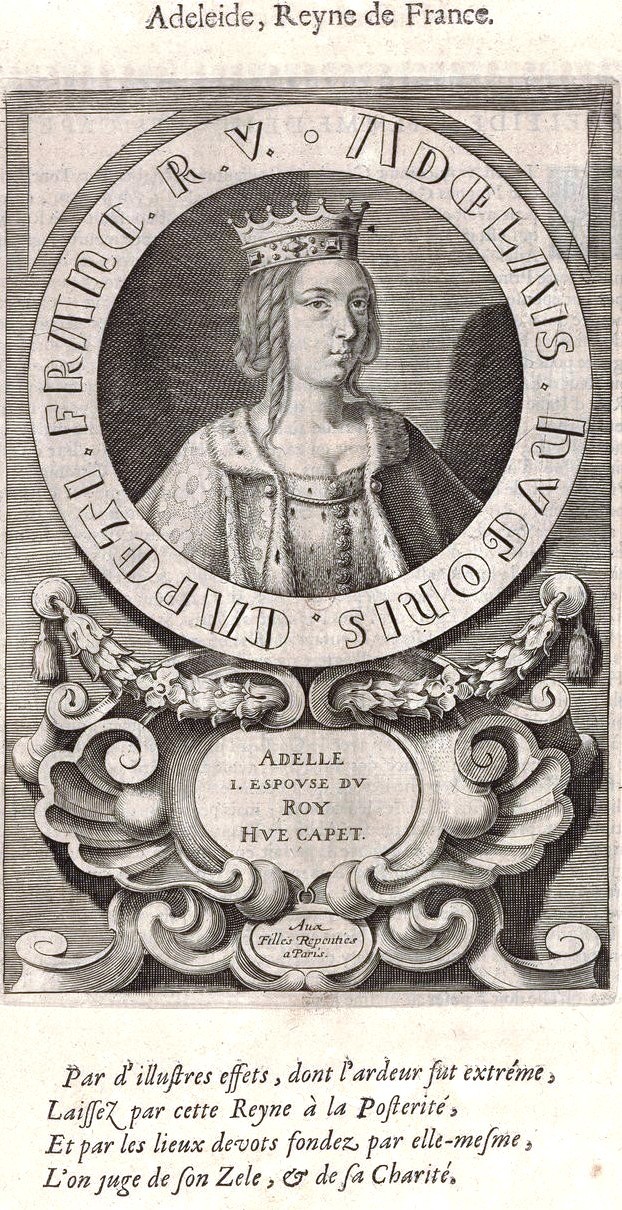
Adelaïde, Reine de France, deuxième femme de Hugues Capet.
6 notes
·
View notes